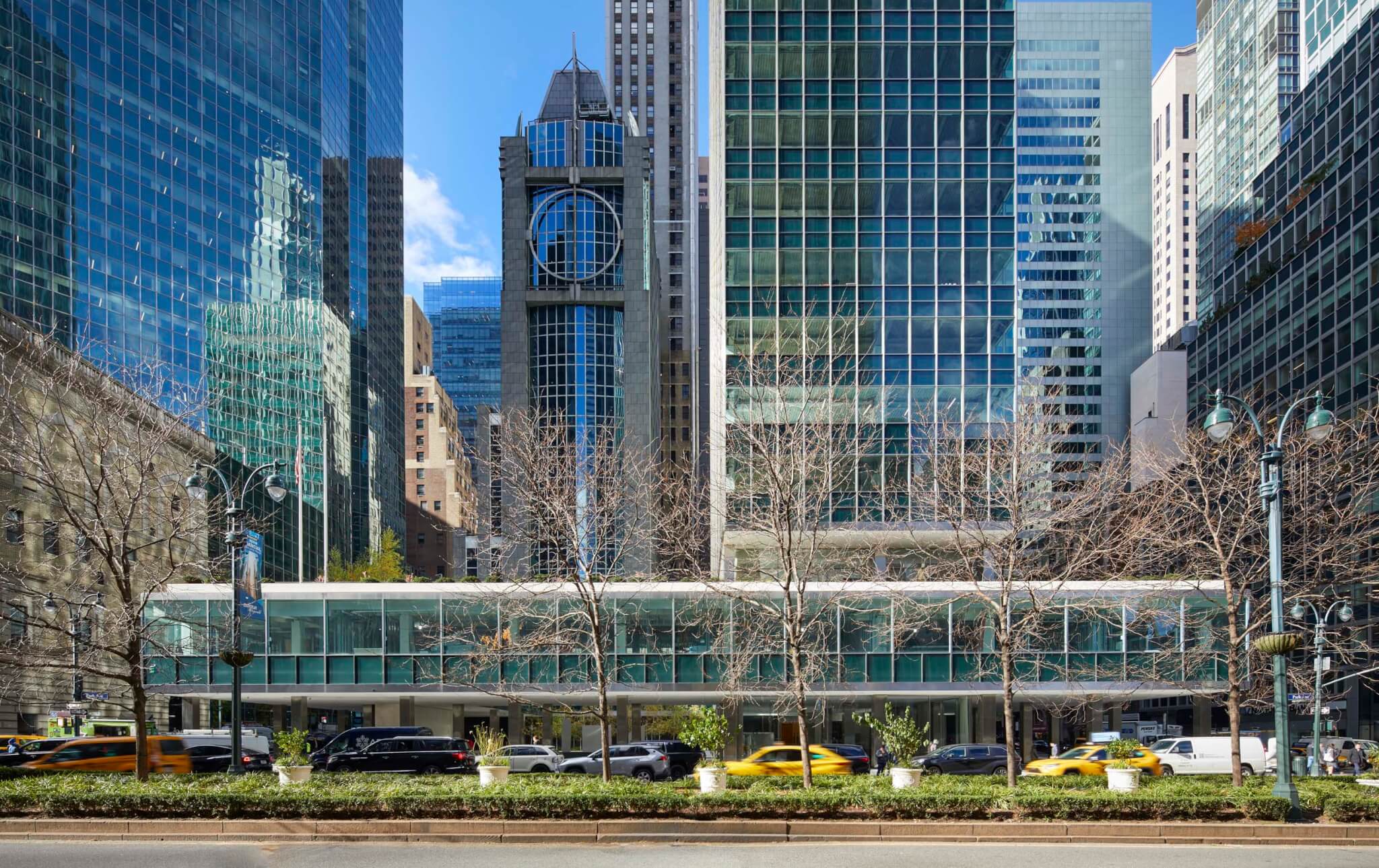[ad_1]
In 1952, SOM’s Lever House landed like a cool slab of wirecut soap hygienically set on a plinth along the stony, tony canyon of Park Avenue. Its post-war transcendence was widely lauded. Lewis Mumford’s review for The New Yorker, published in the August 8, 1952, issue and resurrected in Alexandra Lange’s Writing About Architecture, called it “a building of outstanding qualities, mechanical, aesthetic, [and] human.” The following summer, while romancing Eero Saarinen, Aline B. Louchheim captured the thoughts of Nikolaus Pevsner about the building in The New York Times: “‘The fact that such an extraordinary building was commissioned from “a firm” rather than an individual genius […] is different from the Continent.’” He prophesied, “I see this as the beginning of something.”
Seventy-one years later, that something still shines. Following the two-sided curtain wall facade of the UN’s Secretariat building, finished in 1951, the Lever House was New York’s first four-sided curtain wall facade. Its design was fully sealed for interior air conditioning, which required SOM’s invention of the window-washing scaffold, built by the Otis Elevator Company, so the exterior could be cleaned with Lever’s own products. Threatened with demolition after falling into disrepair, the structure was landmarked in 1982. Its exterior, an experiment in the 1950s, was almost fully redone in 2001 under SOM’s direction, with a new, high-performance facade replacing the original assemblies. (The steel mullions were corroding, causing nearby glass panes to crack.) This latest round of polishing focuses on the internal and amenity spaces: the lobby, elevators, outdoor terrace, and a restaurant for tenants.
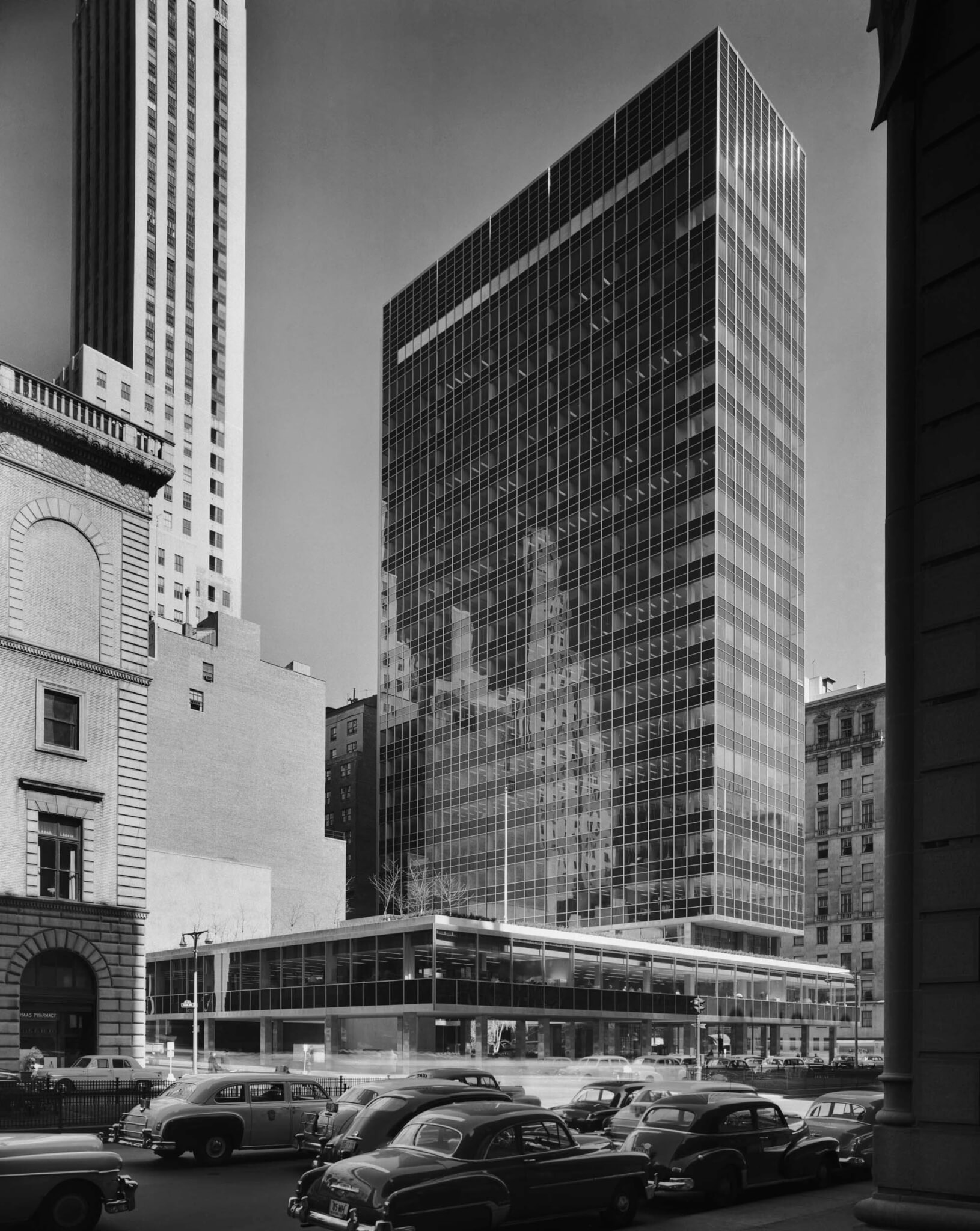
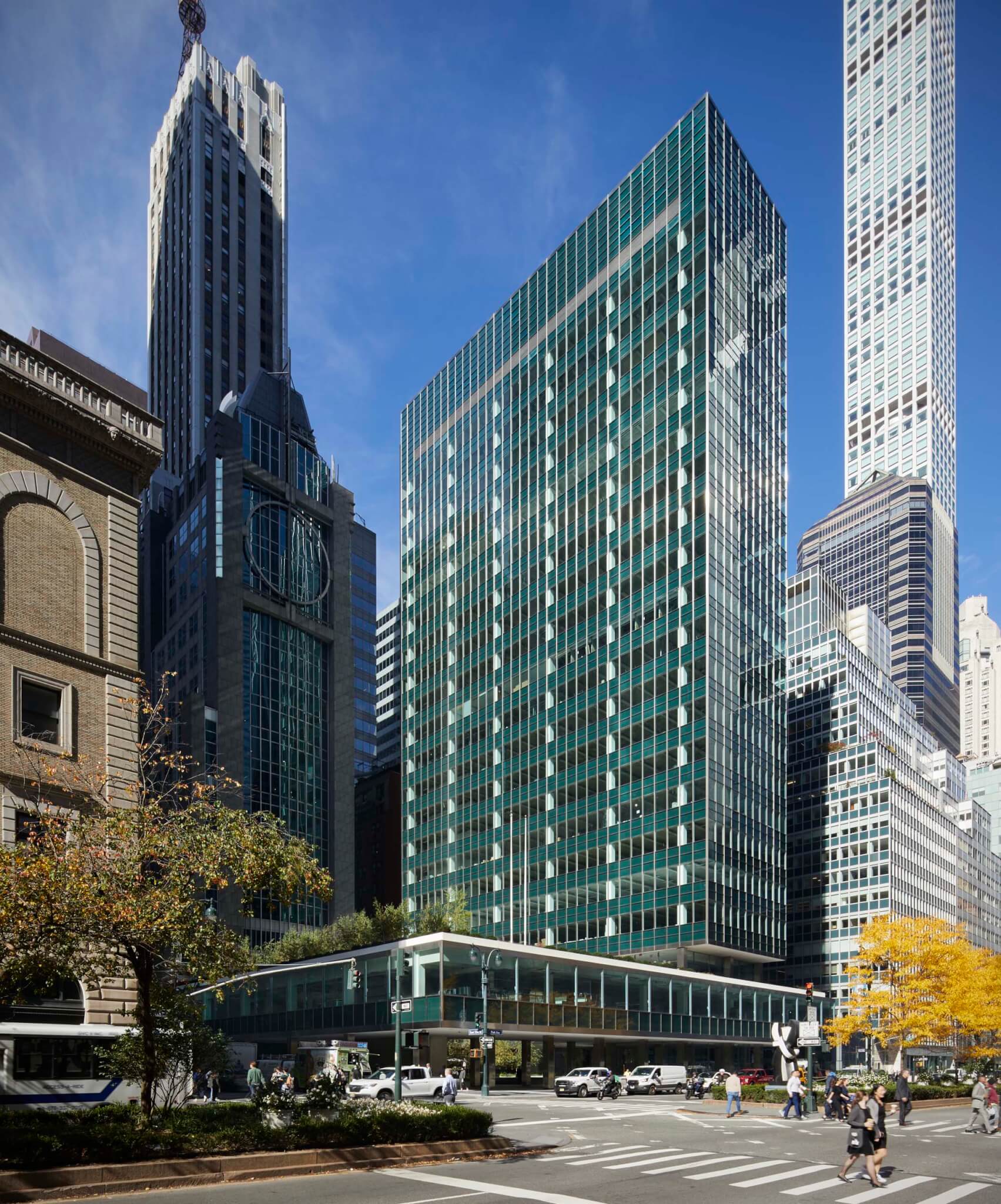
This most recent work, again led by SOM but now with Marmol Radzinger handling the interiors and Higgins Quasebarth & Partners serving as a preservation consultant, was a mix of nearly archeological restorations and new insertions—namely, an interior for The Lever Club, a commissary on the third floor to be operated by the Sant Ambroeus Hospitality Group. The improvement was commissioned by Brookfield and WatermanCLARK, who bought the building in 2020. In the midst of an office-vacancy crisis and speculation about the future of in-person workplaces, its owners are confident that the 21 floors and 240,000 rentable square feet of Class A office space will soon be home to the operations of financial companies, hedge funds, and family offices, among other businesses. Monthly asking prices begin north of $200 per square foot.
On the ground floor, much has been replaced, included substituting cast-in-place concrete for the non-original stone paving. Still, the overall scheme, designed by Raymond Loewy, is intact, even elevated. The black limestone lining the rear wall was re-honed, polished, and cleaned; above, the water-damaged plaster ceiling has been replaced; and underfoot, the terrazzo has been refurbished. At the back of the elevator lobby, the yellow, Murano glass tile wall has been cleaned up and patched. Amid the (refinished) original stainless steel column wraps, the lobby’s vitrines remain, though now they host art, not cleaning products: Currently, they display models of sculptures by Ellsworth Kelly in honor of his centennial; full-size pieces are also installed on the ground floor, the first in a rotating set of year-long art shows.
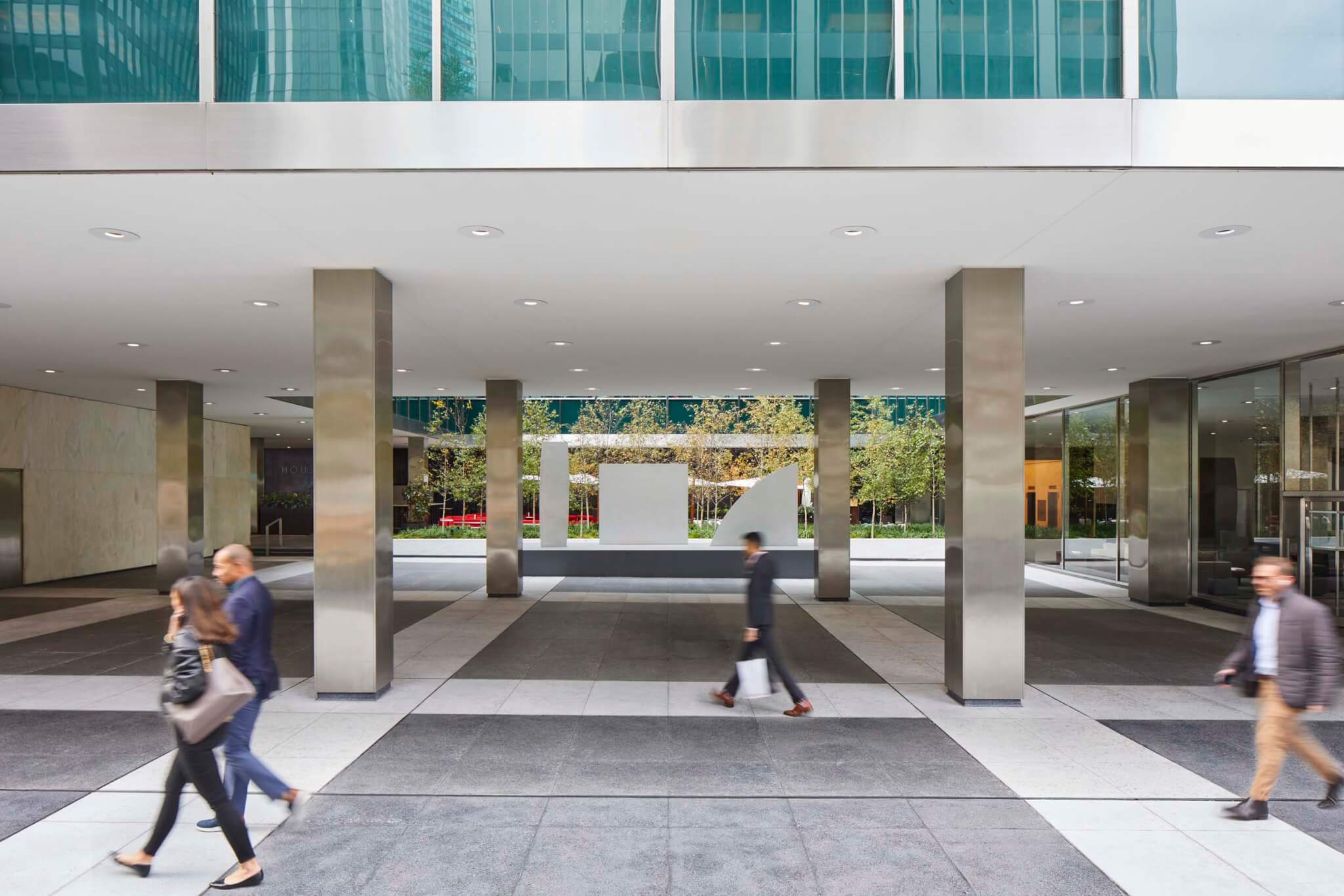
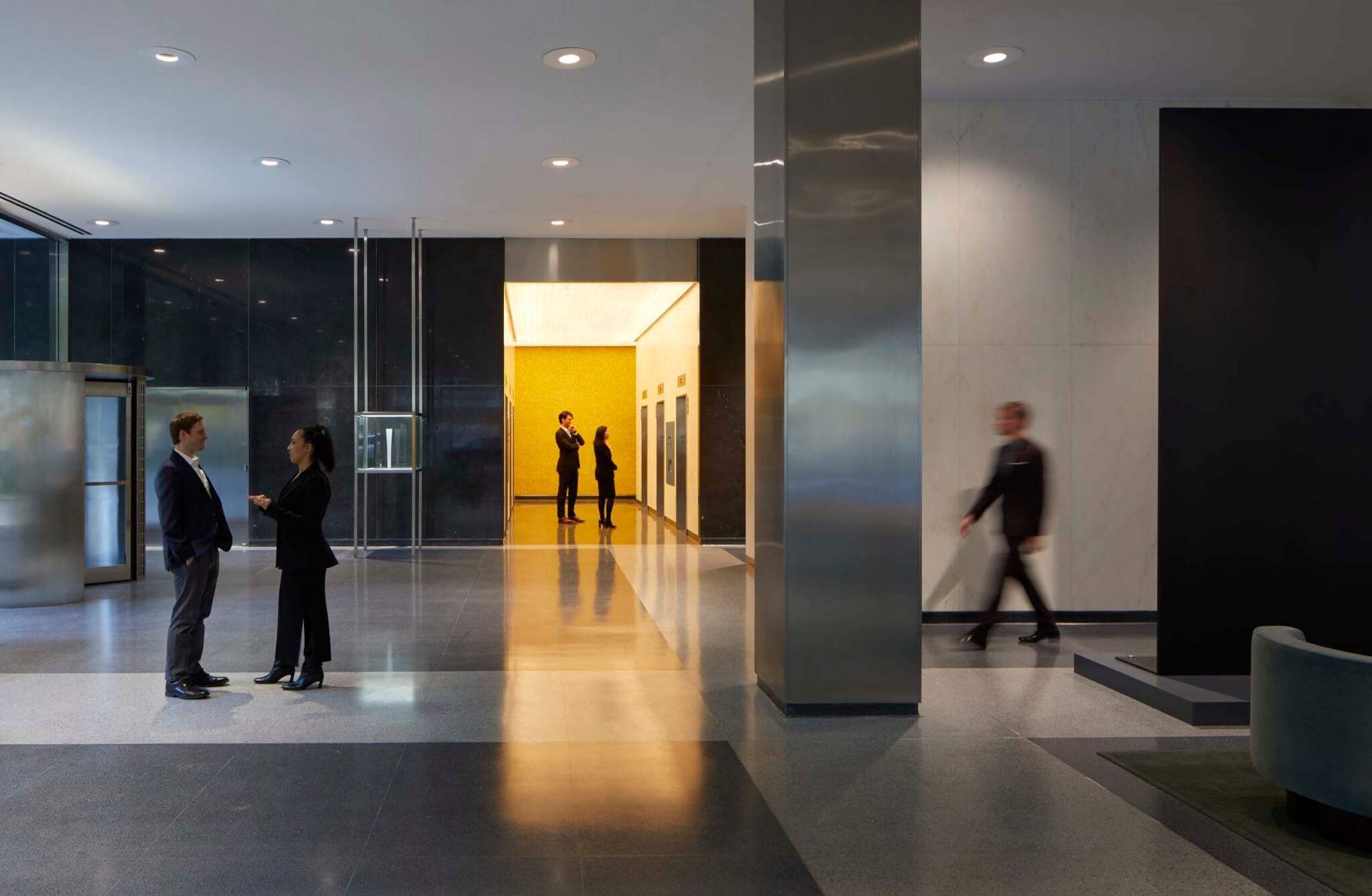
On the third floor, the cafeteria has been transformed into The Lever Club for use by tenants. Using the concept of colorblocking, Marmol Radziner delivered a suite which includes a central bar, gathering spaces, reservable conference rooms, and a 15,000-square-foot landscaped outdoor terrace and gardens. On the terrace, Reed Hilderbrand added mini-forests of white birch trees, in addition to other plantings. Inside, it’s more of a fancy, all-day cafe vibe and less of a Mad Men rip-off. The main open area is lined in soapstone and rosewood walls with green marble floors mottled with galaxy-like patterning. Custom furniture is finished in leather, mohair, and rosewood, and a cast-glass screen behind the bar bounces and holds light.
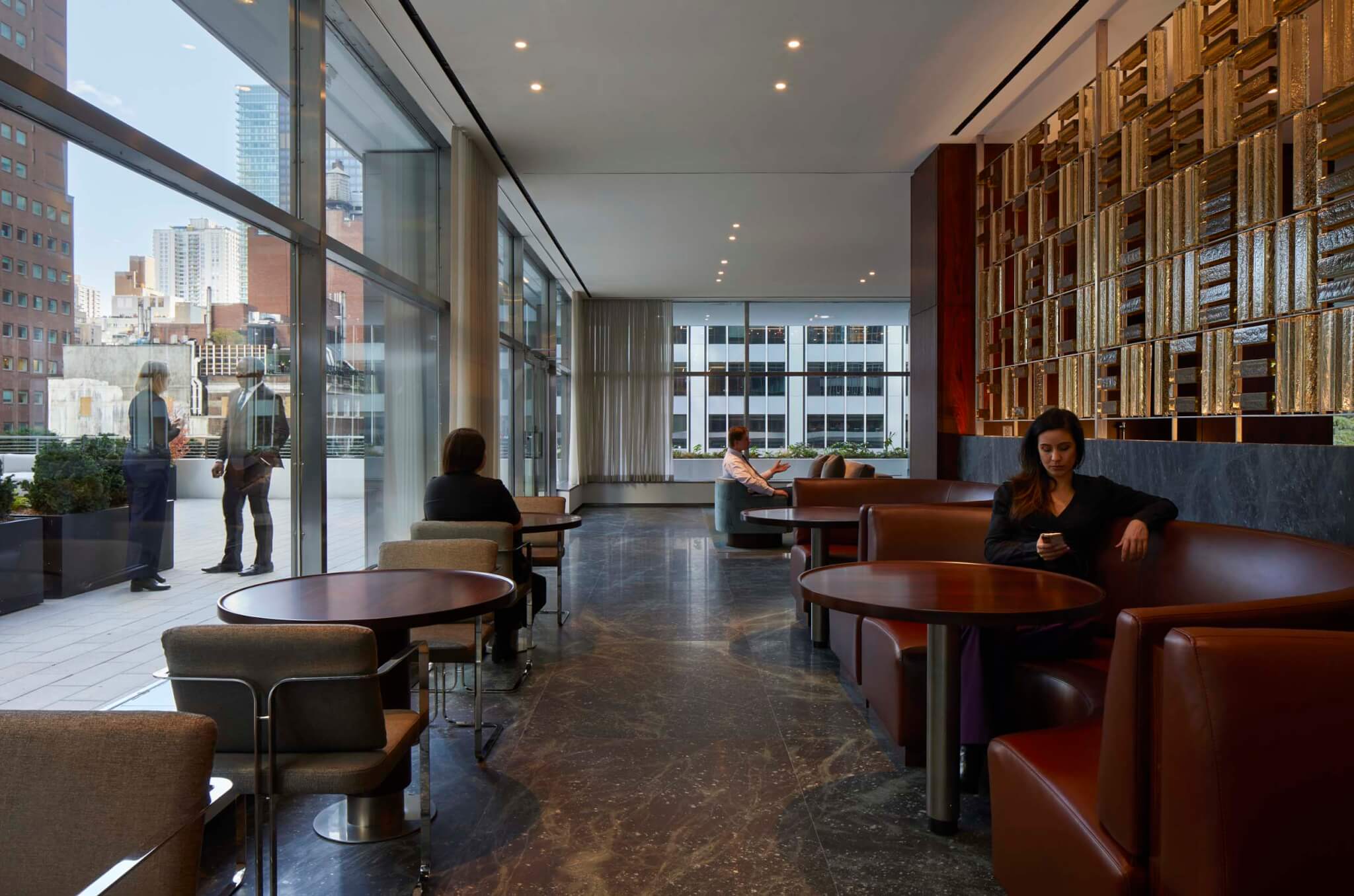
When visiting an upper floor, just 11,000 square feet in area, it becomes clear that a good chunk of the budget was spent on modernizing the building’s HVAC systems, including new chillers, HEPA filters, and an automated building management system. (A generator, improved security systems, and modernized elevators were also installed.) This mechanical work has spatial results: SOM removed the original induction units and instead installed a Dedicated Outdoor Air System (DOAS) to circulate air; because air movement and condition doesn’t rely on large ducts, ceiling heights can be up to a foot taller. (“It’s not a party until you talk about the DOAS,” remarked one Brookfield representative during a recent press tour.) Additionally, along the perimeter the space behind the spandrel glass, originally deep enough to conceal a radiator inboard of a low CMU wall, has been thinned, recapturing a slender bit of valuable leasable area.
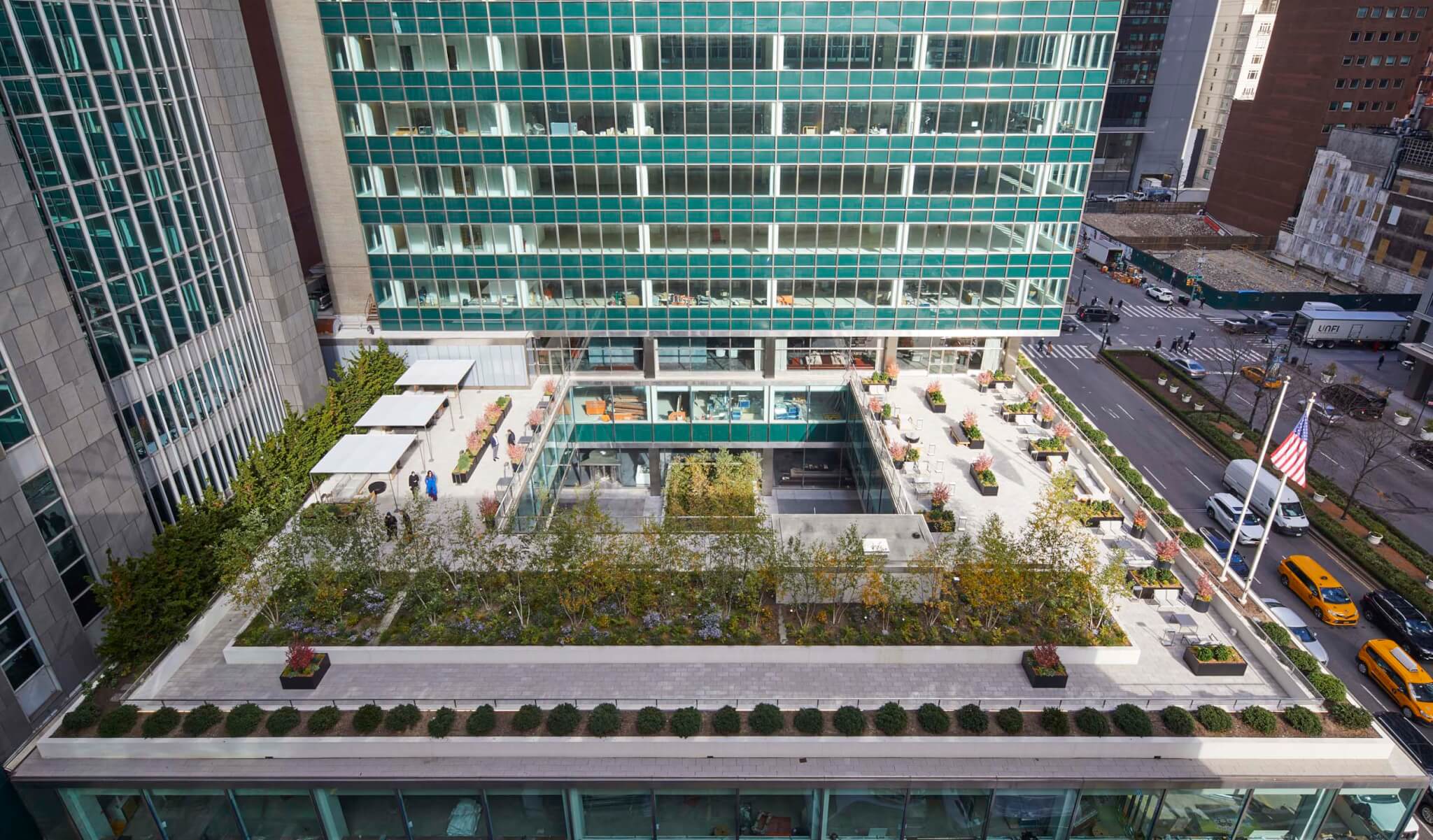
In plan, Lever House’s services are loaded on the west side of the office block, leaving the east side open on three sides. Beyond the mirrored elevator shafts, a fire stair is pushed toward the center of the plan rather than aligning with the core, allowing for a usable office to the north along the facade. A column lands in the southeast corner of this stairwell and repeats within the office space, which establishes two uneven bays, one larger and one smaller, resulting in a stretched portion of the structural grid which is legible even in the lobby. (This asymmetry seems to help with desk layouts, as there isn’t a column interrupting where desks might be backed together along the centerline of the floor.) One hopes that future office schemes will preserve the views through the narrow floor plate up and down Park Avenue.
Some of these changes are evident when strutting across the building’s street-level expanse, like a new door in the limestone wall that improves outdoor service at Casa Lever, but most are concealed and integrated into the two blue-green glass prisms—one long, one tall, both thin. The construction still holds its own against a larger canonical example of curtain wall–plus–plaza modernism: the Seagram Building, set diagonally across Park Avenue. The pair in part changed New York’s zoning laws; when the City passed a new zoning resolution in 1961, it included the option to secure as-of-right bonus area if one included open spaces in the project. Thus the POPS was born.
With its skin replaced and insides polished, Lever House continues to benefit not only from good bones, but steadfast stewardship. Pre-landmarking, it could have easily scored a date with a wrecking ball, like SOM’s 1960 headquarters for Union Carbide a few blocks south. Though clearly nipped and tucked to pamper well-heeled lessees, the spaceship-like Lever House showcases the rudiment of durable construction: Properly cared for, sturdy buildings will outlast us all.
[ad_2]
Source link

